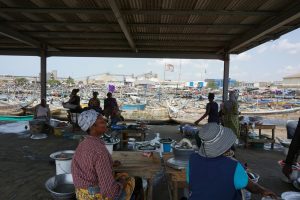Disaster preparedness now influences homebuying choices
When searching for a new place to call home, homebuyers often prioritize factors like location, price, and amenities. However, in recent years, another aspect has become increasingly important: disaster preparedness. With natural disasters becoming more frequent and severe, potential homeowners are now factoring in a property’s vulnerability to disasters before making their purchase. In fact, disaster preparedness has become such a significant consideration that it can now influence homebuying choices. Let’s explore this growing trend and how it’s shaping the real estate market.
The Growing Concern of Natural Disasters
In recent years, natural disasters have been occurring at an alarming rate. From hurricanes and wildfires to floods and tornadoes, no region is safe from the devastation that these events can bring. According to the National Centers for Environmental Information, 2020 saw a record-breaking 22 weather and climate disasters that each caused at least $1 billion in damages. This growing threat has put disaster preparedness at the forefront of people’s minds, especially when it comes to making one of life’s biggest investments – buying a home.
Prioritizing Disaster Preparedness in Homebuying Choices
Gone are the days when homebuyers only considered factors like square footage and curb appeal. Today, disaster preparedness is becoming a top priority. This trend is particularly prevalent among younger generations, such as millennials and Gen Z, who have grown up witnessing the devastating effects of natural disasters. They know firsthand the importance of having a home that can withstand the forces of nature.
Location, Location, Location – Is It Disaster-Prone?
One of the first questions potential homebuyers ask is, “Is this location prone to natural disasters?” Whether it’s earthquakes in California, hurricanes in Florida, or wildfires in the Pacific Northwest, the risk of a natural disaster can significantly impact a home’s value. Properties located in high-risk areas may come with higher insurance costs and even stricter building codes, making them less desirable to buyers.
Assessing a Home’s Vulnerability to Disasters
Disaster preparedness goes beyond just the location of a property; homebuyers also take into consideration a home’s construction and features. They want assurance that their potential home can withstand potential disasters and keep their loved ones safe. This is where home inspections come into play. Professionals can assess a home’s vulnerability to disasters, such as checking for proper reinforcement against earthquakes or identifying any potential fire hazards. This information can significantly influence a buyer’s decision, as they can avoid purchasing a property that may put them at risk.
The Impact on the Real Estate Market
As more and more homebuyers prioritize disaster preparedness, it’s affecting the real estate market in several ways. For one, properties in low-risk areas are becoming even more in demand, leading to an increase in property values. At the same time, homes in high-risk areas may see a decrease in value, as buyers are becoming more aware of the potential dangers and costs associated with living there.
The Role of Government and Developers
Disaster preparedness is not just the responsibility of individual homeowners; it also falls on the shoulders of government officials and developers. Government agencies are taking steps to improve building codes and regulations to ensure homes are better equipped to withstand disasters. Developers, on the other hand, are incorporating more disaster-resistant features into their projects, such as reinforced windows, improved insulation, and even underground bunkers.
In Conclusion
When making one of the most significant investments in their lives, homebuyers are no longer just looking for the perfect house; they are also looking for the perfect disaster-safe home. As natural disasters continue to pose a threat, we can expect disaster preparedness to play an even more significant role in homebuying choices. It’s crucial for both buyers and developers to take it seriously to ensure a safer and more resilient future for all.










